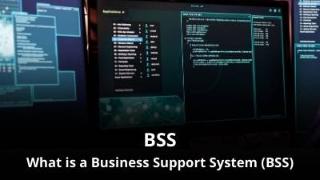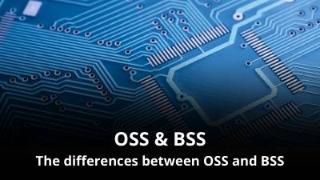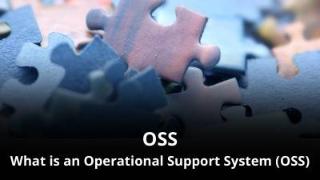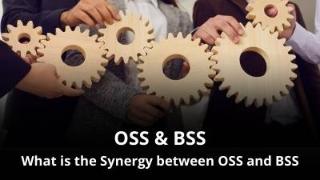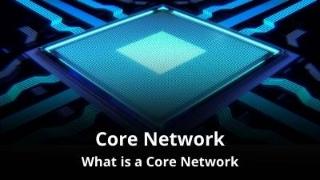What are the differences between the OSS and the BSS?
Let’s take a closer look at the differences between the OSS and the BSS, delving into their unique characteristics, functions, and roles within the telecommunications industry. To put it simply, OSS covers the operations and network side of your MVNO, while BSS covers the business and customer side of your MVNO.
The differences between an OSS and BSS
- What is the focus and purpose of the OSS and BSS?
- What are the core functions of the OSS and BSS?
- What are the data and information handling of the OSS and BSS?
- What is the interaction with customers of the OSS and BSS?
- What is the revenue generation of the OSS and BSS?
- What are the key performance indicators (KPIs) of the OSS and BSS?
- What is the integration and interoperability of the OSS and BSS?
- What is the impact on customer experience of the OSS and BSS?
- Summary of the differences between the OSS and BSS
- Frequently Asked Questions (FAQs)
What is the Focus & Purpose of the OSS and BSS?
Operations Support Systems (OSS)
Operations Support Systems primarily centers around the technical aspects of network management. Their core purpose is to ensure that the underlying telecommunications infrastructure operates optimally, guaranteeing high-performance, availability, and reliability.
OSS is the backbone of network operations, dealing with functions like network provisioning, fault management, and performance monitoring. It acts as the guardian of network health, striving to minimize disruptions and maintain consistent service quality.

Business Support Systems (BSS)
In contrast, Business Support Systems revolve around the business side of telecommunications operations. Their primary focus is on driving revenue, fostering customer relationships, and supporting the broader financial and operational activities of telecommunications service providers.
BSS encompasses a wide array of functions, including customer management, billing and charging, order management, and revenue assurance. Essentially, BSS ensures that the business side of telecommunications functions seamlessly, aligning customer needs with revenue streams.
What are the Core Functions of the OSS and the BSS?

Operations Support Systems (OSS)
The core functions of Operations Support Systems are deeply entrenched in the realm of network management. These functions include network provisioning, fault management, performance monitoring, and configuration management.
- Network Provisioning: OSS ensures that network resources are allocated efficiently and that services are provisioned accurately. It plays a pivotal role in activating new services and managing existing ones.
- Fault Management: Rapid fault detection and resolution are critical components of OSS. It monitors the network for anomalies and alerts network administrators when issues arise, facilitating prompt problem resolution.
- Performance Monitoring: OSS continuously assesses network performance by collecting and analyzing data on key performance indicators (KPIs) such as latency, throughput, and resource utilization. This data aids in optimizing network efficiency and ensuring quality of service (QoS).
- Configuration Management: Network elements and their configurations are meticulously tracked by OSS. This ensures consistency across the network and streamlines the process of implementing changes and updates.

Business Support Systems (BSS)
Business Support Systems, in contrast, focus on the customer-centric and revenue-related aspects of telecommunications operations. Their core functions include customer management, billing and charging, order management, and revenue assurance.
- Customer Management: BSS systems maintain comprehensive customer profiles, enabling effective customer relationship management (CRM). They store customer information, track interactions, and manage customer accounts.
- Billing and Charging: Billing and charging systems are a critical component of BSS, calculating charges for services, generating invoices, and facilitating payment processing. Accuracy in billing is paramount for revenue generation.
- Order Management: BSS oversees the process of managing customer service orders. This includes service activation, modification, and cancellation, ensuring that customer requests are processed efficiently.
- Revenue Assurance: Revenue assurance is central to BSS, as it focuses on minimizing revenue leakage and optimizing revenue streams. This involves monitoring revenue-related processes and identifying discrepancies or irregularities.
What are the Data and Information handling of the OSS and BSS?

Operations Support Systems (OSS)
Operations Support Systems primarily deal with technical data related to network elements, performance metrics, and fault notifications. These data streams are essential for maintaining the health and functionality of the network.
Data processed by OSS includes:
- Network Element Data: This encompasses information about routers, switches, servers, and other network equipment. OSS tracks the status, configuration, and utilization of these elements.
- Performance Metrics: OSS collects data on various network performance metrics, such as packet loss, latency, and bandwidth utilization. This information is vital for optimizing network resources.
- Fault Notifications: In the event of network issues or anomalies, OSS generates fault notifications. These notifications trigger alerts and actions to resolve network problems.

Business Support Systems (BSS)
Business Support Systems handle customer-related data, which is critical for managing customer relationships and revenue generation.
This data includes:
- Customer Profiles: BSS systems store detailed customer profiles, including contact information, billing preferences, service subscriptions, and usage history. This information is essential for personalized customer interactions.
- Billing Information: Billing and charging systems within BSS rely on customer billing information to calculate charges accurately. This data includes pricing plans, usage details, and payment preferences.
- Service Usage Data: BSS captures data related to service usage by customers, such as call records, data usage, and content purchases. This usage data forms the basis for billing and revenue calculations.
What is the Interaction with Customers of the OSS and BSS?
Operations Support Systems (OSS)
Operations Support Systems have minimal direct interaction with customers. Their primary function is to ensure the reliability and performance of the network infrastructure, which indirectly contributes to a positive customer experience. OSS operates behind the scenes, maintaining network quality to minimize service disruptions.

Business Support Systems (BSS)
Business Support Systems, on the other hand, have extensive direct interactions with customers. This is facilitated through Customer Relationship Management (CRM) systems within BSS. BSS manages customer accounts, processes service orders, generates invoices, and handles customer inquiries and support. The customer-facing aspect of BSS is critical for building and maintaining strong customer relationships.
What is the Revenue Generation of the OSS and BSS?
Operations Support Systems (OSS)
Operations Support Systems indirectly contribute to revenue generation by maintaining network performance and quality. A well-managed network ensures that services are delivered efficiently and reliably to customers, which can lead to increased customer satisfaction and retention. While OSS doesn’t directly generate revenue, its role is integral to ensuring that network services are monetized effectively.

Business Support Systems (BSS)
Business Support Systems are directly responsible for revenue generation within the telecommunications industry. They manage customer accounts, calculate charges for services, generate invoices, and process payments. BSS plays a pivotal role in the financial aspect of the telecom business, directly impacting the bottom line.
What are the Key Performance Indicators (KPIs) of the OSS and BSS?

Operations Support Systems (OSS)
Key Performance Indicators (KPIs) within Operations Support Systems revolve around network performance metrics. These metrics provide insights into the health and efficiency of network operations. Some key OSS KPIs include:
- Uptime: This measures the percentage of time that network services are available to users. High uptime is indicative of a reliable network.
- Latency: Latency measures the delay in data transmission within the network. Lower latency is typically desirable for real-time applications.
- Fault Resolution Times: OSS tracks the time it takes to detect and resolve network faults. Faster fault resolution leads to improved network reliability.

Business Support Systems (BSS)
Business Support Systems focus on customer-related KPIs that gauge the effectiveness of customer-centric operations.
Some key BSS KPIs include:
- Customer Acquisition and Retention Rates: These metrics assess the ability to attract new customers and retain existing ones. High retention rates are indicative of strong customer relationships.
- Average Revenue Per User (ARPU): ARPU measures the average revenue generated per customer. It provides insights into the monetization of services.
- Billing Accuracy: Ensuring that invoices accurately reflect service usage is critical for maintaining customer trust and revenue integrity.
What is the Integration and Interoperability of the OSS and BSS?
Operations Support Systems (OSS)
Operations Support Systems must seamlessly integrate with network infrastructure components such as routers, switches, servers, and monitoring equipment. This integration ensures that network elements are configured correctly and managed effectively. Interoperability with various network technologies and equipment is a key consideration for OSS.

Business Support Systems (BSS)
Business Support Systems require integration with Customer Relationship Management (CRM) systems, billing platforms, and financial systems. This integration ensures that customer information, billing data, and payment processing are accurately synchronized. BSS also needs to interface with marketing and sales systems to support promotions and service offerings.
What is the Impact on Customer Experience of the OSS and BSS?
Operations Support Systems (OSS)
Operations Support Systems have an indirect but significant impact on the customer experience. A well-managed network, facilitated by OSS, leads to fewer service disruptions, lower latency, and high uptime. These factors contribute to an overall positive customer experience by ensuring that services are consistently available and reliable.
Business Support Systems (BSS)
Business Support Systems have a direct impact on the customer experience through various touchpoints:
- Customer Management: Effective CRM systems within BSS facilitate personalized customer interactions, addressing customer needs promptly and efficiently.
- Billing and Charging: Accurate and transparent billing processes enhance the customer experience by providing customers with clear and trustworthy invoices.
- Order Management: Efficient order processing and service activation ensure that customers receive the services they request in a timely manner.
- Customer Support: BSS systems support customer support teams in addressing inquiries and resolving issues promptly, leading to higher customer satisfaction.
Summary of the differences between the OSS and BSS
In summary, while Operations Support Systems (OSS) and Business Support Systems (BSS) have distinct focuses and functions, they are intertwined in the complex web of telecommunications operations. OSS is the technical backbone, ensuring network reliability and performance, while BSS drives revenue, manages customer relationships, and supports business operations. Their synergy is crucial for delivering seamless and customer-centric telecommunications services. Both are very important when you want to start your MVNO, it is however also depending on the type of MVNO which you need.
Frequently Asked Questions (FAQs)
What is the core difference between OSS and BSS?
The core difference is in focus: OSS (Operational Support System) manages network operations such as service provisioning, inventory, and performance monitoring, while BSS (Business Support System) handles customer‑facing functions like billing, customer care, product management, and revenue operations.
How does OSS support network operations?
OSS supports network operations by enabling service activation, network configuration, fault and performance management, capacity planning, and resource inventory tracking. These functions help ensure high network reliability and efficient service delivery.
How does BSS support business and customer processes?
BSS supports business and customer processes by managing customer relationships, billing and invoicing, pricing and rate plans, product catalogues, order fulfilment, and revenue assurance. It ensures that commercial operations run smoothly and that customers are billed correctly.
Why is both OSS and BSS important for MVNOs?
Both OSS and BSS are important because they cover the full service lifecycle: OSS delivers reliable network and service operations, and BSS manages business activities like billing, customer engagement, and product offerings. Together they support operational efficiency and customer satisfaction.
Can OSS and BSS be integrated?
Yes. Modern telecom environments integrate OSS and BSS through APIs or unified platforms. This integration allows seamless data flow between network operations and business functions, enabling real‑time service fulfilment, automated billing, and improved operational insights.
How do transformations like 5G or IoT affect OSS and BSS?
Transformations like 5G and IoT require OSS and BSS to support new services, greater scale, real‑time analytics, and more complex service bundles. OSS must handle increased device and network complexity, while BSS must support dynamic pricing, real‑time charging, and tailored customer experiences.

